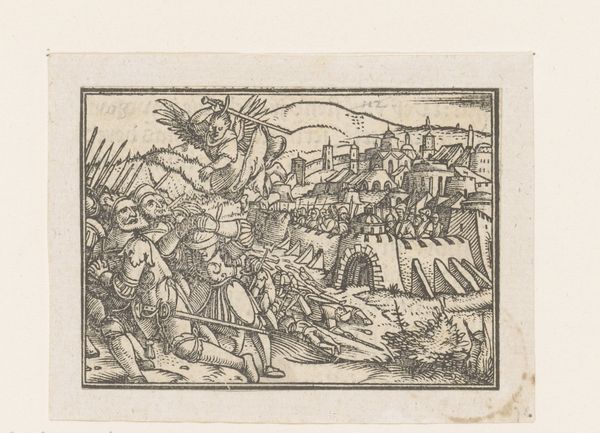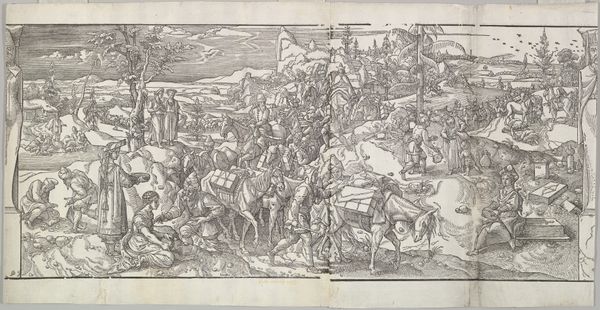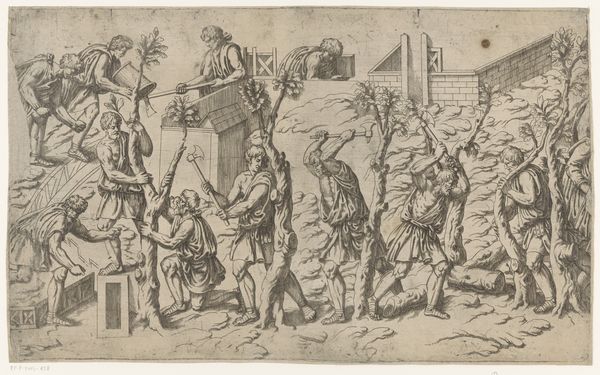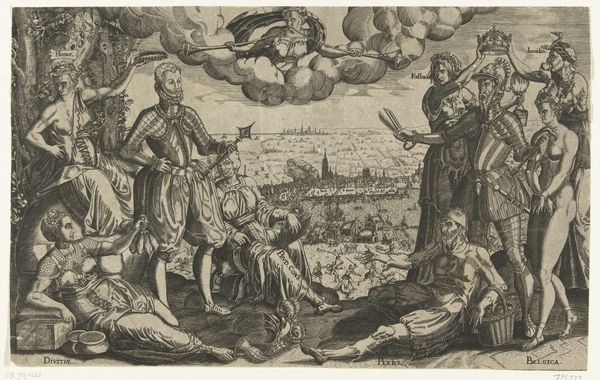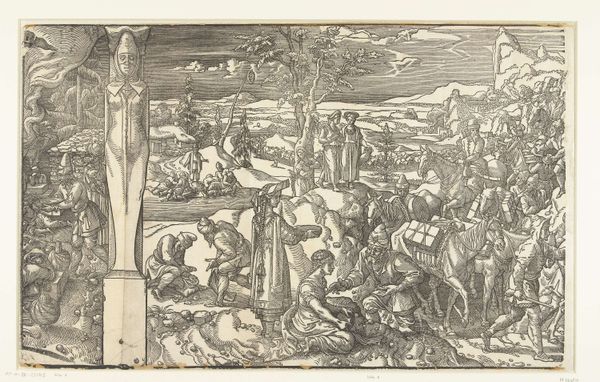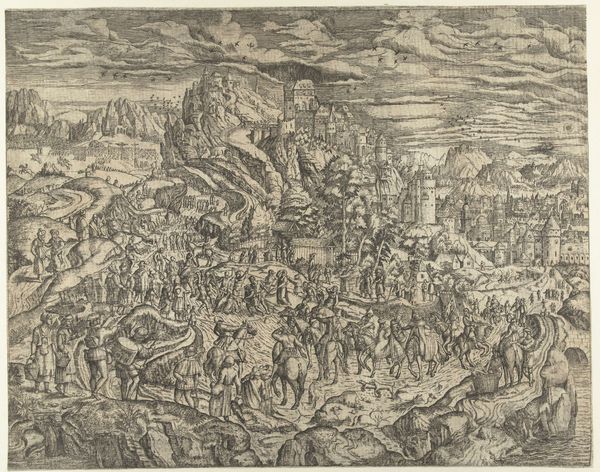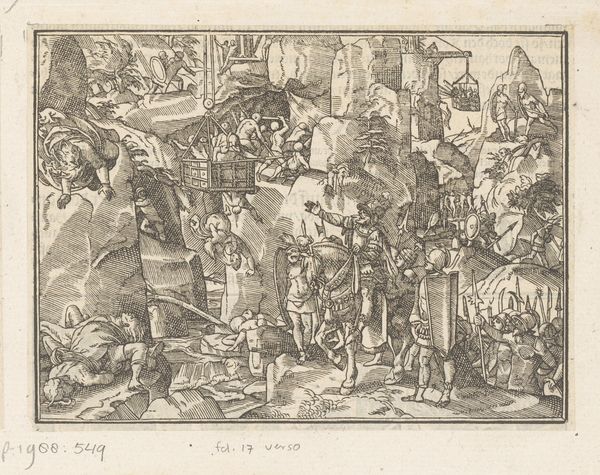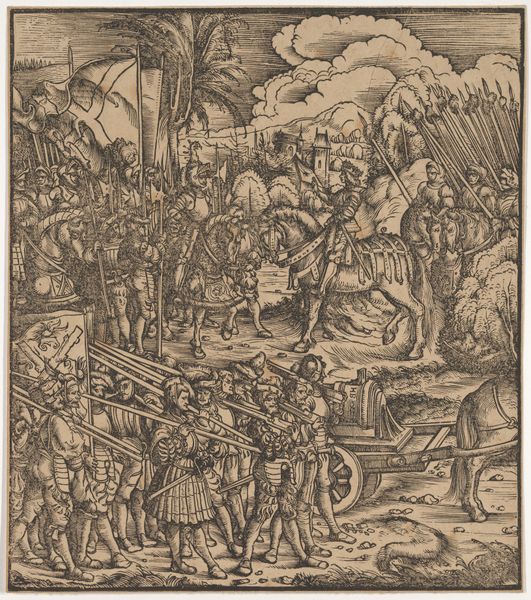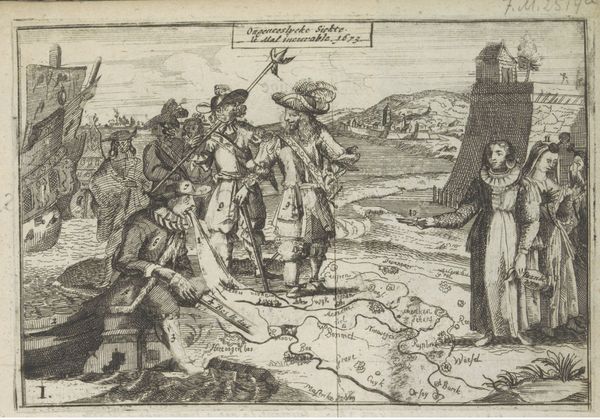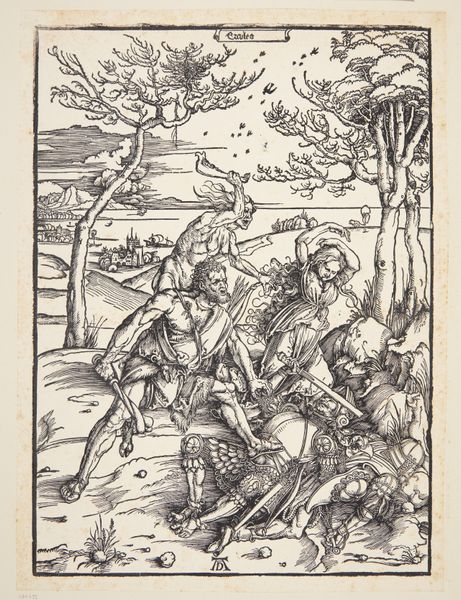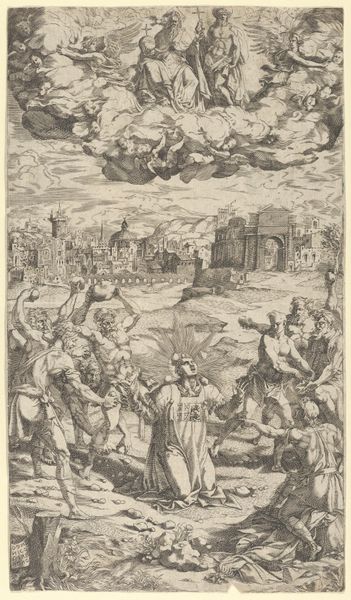
drawing, ink, pen
#
drawing
#
pen drawing
#
pen illustration
#
landscape
#
mannerism
#
figuration
#
ink
#
pen work
#
pen
#
history-painting
Dimensions: height 323 mm, width 489 mm
Copyright: Rijks Museum: Open Domain
Melchior Lorck created this print, ‘The son refuses to shoot at his father’s corpse’, using etching. Made in the Netherlands in the 16th century, this image reflects a time of religious and political upheaval. Lorck’s work, steeped in the visual codes of the Renaissance, serves as a powerful commentary on the era’s moral landscape. Lorck references classical themes to critique contemporary society. Notice how the artist juxtaposes the foreground drama with the backdrop of a detailed cityscape, creating a visual tension that mirrors the conflict between personal ethics and public duty. Lorck was working during the Reformation. It's worth considering if the artist was aligning with the prevailing authorities or challenging them, using his art as a form of resistance. To fully appreciate the depth of this work, delve into historical archives, political pamphlets, and religious texts from the period. The meaning of art hinges on its social and institutional context.
Comments
No comments
Be the first to comment and join the conversation on the ultimate creative platform.
